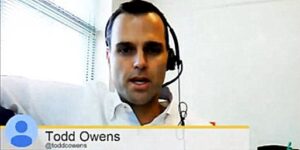
3 Ways To Gain Employee Engagement in Technology Adoption
Today, organizations of all sizes are experiencing a digital transformation. Irrespective of the industry or sector, the majority of businesses are implementing technology to better

Today, organizations of all sizes are experiencing a digital transformation. Irrespective of the industry or sector, the majority of businesses are implementing technology to better

Once in awhile we come face-to-face with reminders that HR really has come a long way, baby

Mobile recruiting is on the rise. What about mobile hiring? The TalentCulture community talks with HR technology experts

Is mobile recruiting here to stay? How can employers make the most of this opportunity? Highlights from our community events

Next-generation leaders have landed, with technology as a constant companion. What should we expect for the future of business?

Cloud computing offers a viable model for “just in time” talent – tapping just the right resources, at just the right time, in just the right place. But while it creates opportunities for skilled professionals, will others in the world of work be left behind?

As business looks for new sources of competitive advantage, and the contingent workforce swells, how can we apply best practices from “cloud” computing models to human capital strategy?
How does Software as a Service extend to human capital management? Watch as innovation experts Jason Averbook and Richie Etwaru discuss what they see ahead for the future of work…
Does technology emerge to fill a business need – say, serving customers better – or is technical innovation driven largely by cost pressures? Does a completely